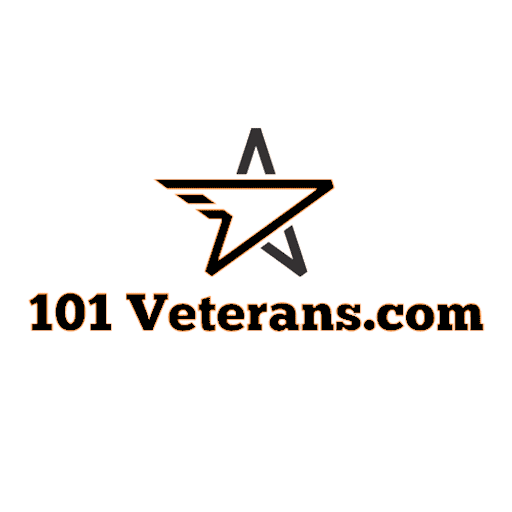DVIDS – News – Collaboration Drives Success
The 2nd Audiovisual Squadron, a highly specialized team of 12 civilians and 36 Airmen, is the largest video production center in the U.S. Air Force. A tenant unit at Hill Air Force Base, Utah, the 2nd AVS has been the go-to source for high-quality multimedia content for the Department of Defense since its creation in 1967.
The squadron’s mission is to “Create effective audiovisual productions that integrate Department of the Air Force stories to advance global DOD missions.” This mission would not be possible without the crucial work of their support flight.
The squadron is made up of seven different career fields, each responsible for a different aspect of the mission. With finance, logistics, personnel and admin Airmen all working together in a supporting role, it’s not often that Airmen must seek outside support to resolve their computer, career or finance issues.
Support Flight Commander: Navigating a Unique Role
U.S. Air Force 1st Lt. Kristin Nielsen, 2nd AVS support flight commander, knew she wanted to become a public affairs officer since she was eight years old.
“My dad was a public affairs officer in the Army, so I grew up seeing how cool it was,” Nielsen said. “I have always been a creative person, so I looked for a career in the military that could utilize that skill.”
Nielsen got her degree in journalism and strategic communication from the University of Minnesota. She said her degree helped her build a solid communication foundation that she could improve on as she gained experience in military communication. It also gave her a better understanding of the communication field outside of the military and allowed her to better relate to civilian stakeholders.
Although she is still a public affairs officer, her current role is far more unique than her peers in other Public Affairs units.
“I’m a public affairs officer by heart, so even though I am not serving in a typical PAO role, I still have a solid understanding of the career field and the importance of the 2nd AVS storytelling mission,” Nielsen said. “That benefits my flight when I have to explain why or how we are supporting PA operations.”
Instead of writing communication plans, coordinating command information, media operations and community relations, Nielsen is responsible for leading a diverse team consisting of the commander support staff, a logistics senior NCO and the resource advisor.
“We all have different experiences, not only because we’re from different career fields, but we also have different cultures within those fields,” Nielsen said. “We’ve talked about those differences, the positives and the negatives of both, and we’ve been able to put those different experiences together to become a better flight.”
Commander Support Staff: Impacting People
The Commander Support Staff is crucial to the success of the squadron, handling 720 personnel actions on average each quarter, or eight actions per day. These actions include keeping track of records, awards, decorations and other important aspects of every Airman’s career.
U.S. Air Force Staff Sgt. Juliann Buschlen, 2nd AVS NCO in charge of CSS, said that while the CSS may not seem to have a big impact, what they do can have career-lasting effects for the Airmen they serve.
“We’re going over people’s records so that they don’t have to worry about if their pay is going to be messed up or if their [Enlisted Performance Brief] is going to go through so that you can focus on the mission and we can focus on all the small little things that people probably don’t even think about,” Buschlen said. “We support the mission that way just by taking care of people.”
Until 2019, the 2nd AVS did not have a CSS and a public affairs Airman was responsible for administration tasks. When the first personnel Airman arrived at the squadron, the CSS had to be built from the ground up. Since then, the CSS has won best CSS at the Air Force Public Affairs Agency level three years in a row by excelling in three categories: Mission Accomplishment and Innovation, Leadership and Management, and Customer Focus.
Buschlen’s position at the 2nd AVS is very different from what her job would normally be at a military personnel flight. Due to her unique role at the squadron, Buschlen has the opportunity to form personal connections with the Airmen she serves.
“You’ve got to help hundreds of people every day and you don’t get to form those connections, or really invest in people’s careers like you can at a unit level,” Buschlen said of a typical MPF. “It’s unique that way, because you get to see the impact you have on people.”
Finance: Maximizing Efficiency
The budget for the 2nd AVS is much larger than the budget for a wing PA shop – nearly 17 times more. The squadron requires such a large budget to acquire and maintain expensive video production equipment, as well as support frequent temporary duty assignments.
As of 2023, the most expensive TDY the squadron has supported was the live broadcast of NASA’s OSIRIS-REx asteroid sample return mission. The squadron was able to support this mission due to a reimbursement account created by the resource advisor. This massive budget covered lodging, transportation and per diem costs for 24 members of the squadron, in addition to purchasing equipment for the mission.
U.S. Air Force Tech. Sgt. Cameron Huntsinger, 2nd AVS resource advisor, serves in a very different role at the 2nd AVS compared to his past positions at finance squadrons. At his last squadron, Huntsinger managed a 40-person finance flight. Here, Huntsinger oversees the budget for the squadron and manages both government purchase cards and the Defense Travel System for the squadron’s TDY missions.
The squadron recently acquired a blanket purchase agreement, an accelerated contracting system that allows the squadron to obtain funds for projects quickly. Due to the acquisition of this BPA, the squadron is now able to support more missions without having to deal with the normally lengthy funding process.
“We were hired to live broadcast the KC-146 [Pegasus], but the comms at Travis said they could not support it, so they couldn’t give us projectors, they couldn’t give us sound,” Huntsinger said. “We don’t have a mobile sound studio that we take, so the BPA purchased all the speakers, all the projectors and all of that so that we could do the job.”
While the squadron has not always had the support of a finance RA, the squadron is now able to manage funds much more efficiently than ever before.
“You don’t need me, it’s more of I can do things quicker,” Huntsinger said. “When you come up with a fun idea, like ‘Hey, I want this,’ I already know how to get it. It just saves time.”
Logistics: Providing Critical Support
U.S. Air Force Tech. Sgt. Gregory Adams, 2nd AVS support flight chief, would normally find himself supporting maintenance with test equipment, vehicles and specialty tools. Here, he’s supporting productions with tripods, video cameras and lighting equipment.
Without the equipment that Adams supplies, the squadron would be unable to function. Equipment is required for every project and TDY, making logistics the backbone of the mission.
“A general in World War I said, ‘Battles are won by the infantry, but wars are won by logistics,’” Adams said. “Whenever I’m trying to figure out how my job is important, that quote always resonates with me.”
At other squadrons Adams typically managed the equipment program, trained equipment custodians and oversaw paperwork. At the 2nd AVS, he serves as the equipment custodian himself.
“Most squadrons appoint someone internally to look over their equipment as a custodian,” Adams said. “I think due to the unique types of assets we have along with the specialized mission we have within the 2nd AVS it makes sense to bring in an outside entity to oversee the program, especially since the number of production Airmen are limited.”
The key to a successful mission is teamwork – and at the 2nd AVS, Airmen from many different career fields and backgrounds come together under one roof to support each other and create effective audiovisual productions.
“With a good relationship comes good work product,” Adams said. “The biggest thing that we can do is support each other, mentally, emotionally, spiritually, and try and create an environment where people want to do their best to support others.”


 Private Internet Access gives you unparalleled access to thousands
of next-gen servers in over 83 countries and each US state. Your
VPN experience will always be fast, smooth, and reliable.
Private Internet Access gives you unparalleled access to thousands
of next-gen servers in over 83 countries and each US state. Your
VPN experience will always be fast, smooth, and reliable.

